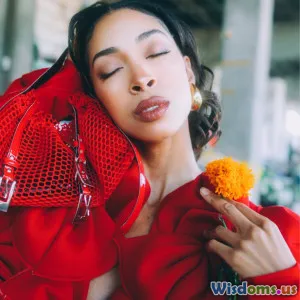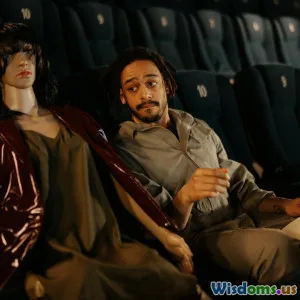
Emerging Voices in Cinema
8 min read Explore the rise of emerging voices in cinema reshaping storytelling with fresh perspectives and bold creativity. (0 Reviews)
Emerging Voices in Cinema: Redefining Storytelling for a Modern Audience
Cinema has long been a mirror reflecting society’s multifaceted identity, evolving through time as new creators add their unique imprints. Today, an exciting wave is sweeping the film industry—emerging voices that disrupt traditional narratives with fresh perspectives, diverse backgrounds, and innovative storytelling techniques. These rising talents are not only crafting unforgettable movies but also transforming how audiences engage with cinema worldwide.
The Power of New Perspectives
Recent years have witnessed a palpable shift in whose stories are told and how. Historically dominated by homogeneous viewpoints, the film industry now makes room for a richer array of voices—from marginalized communities to international filmmakers bridging cultural gaps. This influx is crucial; films shape societal understanding and influence cultural discourse.
For example, Barry Jenkins, the Oscar-winning director of Moonlight (2016), spotlighted Black male identity and inner conflict in a narrative rarely seen on mainstream screens. His success underscores the public’s appetite for authentic stories that break from conventional Hollywood tropes.
Similarly, Chloé Zhao, recipient of multiple accolades including an Academy Award for Best Director for Nomadland (2020), brings a poetic realism influenced by her Chinese heritage and experiences living in American rural towns. Zhao’s work exemplifies how diverse backgrounds foster fresh cinematic languages that resonate deeply with global audiences.
Gateways for Emerging Filmmakers
Multiple factors contribute to improved access and opportunities for new voices in cinema. Digital platforms, such as YouTube, Vimeo, and streaming services, have democratized film distribution, allowing independent creators to reach audiences without traditional studio backing. Moreover, film festivals like Sundance and TIFF increasingly spotlight first-time directors and underrepresented groups.
Consider Lulu Wang's The Farewell (2019), which premiered at Sundance and captured international attention with its heartfelt portrayal of Chinese-American family dynamics juxtaposed against cultural differences. Platforms and festivals acting as incubators help break down old barriers, proving that compelling stories can come from anywhere.
Advancements in filmmaking technology have simultaneously lowered costs. Lightweight digital cameras and affordable editing software empower creators to produce professional-quality works. This technological shift, paired with incubator programs and grants focused on inclusivity (e.g., the Sundance Institute’s Diversity Lab), opens pathways for talented filmmakers previously sidelined.
Thematic Shifts and Storytelling Innovation
Emerging voices often bring boldness in theme and style that revitalizes cinematic conventions. Stories explore complex social issues with nuance—topics such as identity, gender fluidity, mental health, and climate change increasingly feature prominently.
For instance, Mati Diop’s Atlantics (2019), the first feature by a Black female director selected for Cannes’ main competition, entwines supernatural folklore with migration politics, crafting a poetic narrative rarely seen in global cinema.
Additionally, the rise of Indigenous and LGBTQ+ filmmakers introduces critical perspectives long neglected or misrepresented. Imagine the works of Taika Waititi, whose humor and indigenous roots shine in films like Jojo Rabbit (2019), an inventive WWII satire challenging historical narratives and prejudice with wit and heart.
Experimental narrative forms also gain traction—films that blur genres, employ non-linear storytelling, or integrate multimedia elements. This willingness to challenge norms invites audiences to experience stories viscerally and intellectually anew.
Economic and Cultural Impact
The influence of emerging voices extends beyond artistic circles, impacting box office trends and cultural dialogues. Diverse films often appeal to previously underserved demographic groups, revealing significant market demand. According to a 2021 Nielsen report, movies with diverse casts outperformed others at the box office and on streaming globally, reflecting a shift in consumer preferences.
Moreover, stories that portray complex cultural identities foster empathy and expand viewers’ worldviews—an invaluable contribution amid global fragmentation.
This influence prompts major studios to reconsider their production slates and casting choices. Disney’s recent record-breaking performances of Black Panther (2018) and Raya and the Last Dragon (2021) demonstrate a profitable alignment of diversity and storytelling excellence, encouraging more investments in projects helmed by emerging diverse directors.
Challenges Facing Emerging Voices
Despite tangible progress, new filmmakers face obstacles such as limited funding, distribution hurdles, and industry gatekeeping. Often, success stories are accompanied by tales of perseverance amidst systemic barriers.
Gender disparities remain pronounced; the USC Annenberg Inclusion Initiative found that only 10.6% of the top 100 grossing films from 2018 to 2020 were directed by women. Ethnic minorities and LGBTQ+ filmmaker representation are similarly underrepresented.
Against this backdrop, mentorship programs and advocacy organizations gain importance. The Women in Film organization, the Black List Labs, and Outfest’s Emerging Leaders Lab serve as community pillars fostering talent. Industry veterans such as Ava DuVernay famously support emerging peers, amplifying their messages and expanding networks.
Looking Ahead: The Future is Bright
The momentum behind emerging voices in cinema bodes well for the medium’s evolution. Continuously broadening the diversity of storytellers enriches cinema, forging both artistic innovation and cultural empathy.
Upcoming talents to watch include Mati Diop’s follow-ups, Lulu Wang’s future projects, rising international auteurs like Deepa Mehta from India or Sebastián Lelio from Chile, and fresh voices across digital platforms experimenting with immersive formats such as virtual reality.
The democratization of tools and platforms means that storytelling’s future will not be monolithic—rather, it will be a vibrant mosaic reflecting global complexity.
Conclusion
Emerging voices in cinema are more than just new names or faces; they signify a fundamental shift in whose stories matter and how they are told. Buoyed by technological advancements, changing audience appetites, and vital support systems, these filmmakers are dismantling old paradigms, cultivating diversity, and enriching the cultural landscape. Their narratives challenge viewpoints, inspire empathy, and expand what we understand as cinema’s power.
In celebrating and supporting these burgeoning talents, consumers, studios, and institutions can collectively foster a more inclusive and innovative cinematic future. As the spectrum of voices broadens, so does the potential for stories that enlighten, entertain, and unite audiences worldwide.
For cinephiles and industry insiders alike, paying attention to emerging cinematic voices is imperative: they are the storytellers shaping tomorrow's culture.
Rate the Post
User Reviews
Popular Posts



















